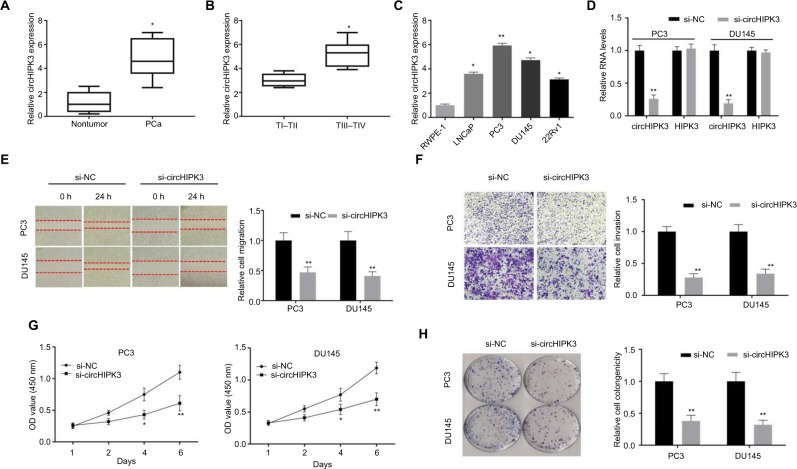Figure 1.
CircHIPK3 silencing inhibits PCa cell proliferation and invasion.
Notes: (A) Relative expression of circHIPK3 in PCa tissue samples and their paired noncancerous tissue samples measured by qRT-PCR (Student’s t-test). (B) Relative expression of circHIPK3 in TI–TII PCa samples and TIII–TIV PCa samples measured by qRT-PCR (Student’s t-test). (C) Relative expression of circHIPK3 in PCa cell lines was measured by qRT-PCR (Student’s t-test). (D) Relative circHIPK3 and HIPK3 mRNA expression was detected after transfection in PC3 and DU145 cells by qRT-PCR (Student’s t-test). (E) Wound-healing assays were used to detect cell migration capacities of PC3 and DU145 cells after transfection (Student’s t-test). (F) Transwell assays were used to detect cell invasion capacities of PC3 and DU145 cells after transfection (Student’s t-test). (G) CCK-8 assays were used to detect cell viability of PC3 and DU145 cells after transfection (Student’s t-test). (H) Colony formation assays were used to detect cell viability of PC3 and DU145 cells after transfection (Student’s t-test). Quantified values were mean ± SD of at least three independent experiments. *P<0.05, **P<0.01.
Abbreviations: CCK-8, Cell-Counting Kit-8; NC, negative control; PCa, prostate cancer; qRT-PCR, quantitative real-time reverse transcription PCR.

